73 F. maximum temperature in the Twin Cities Sunday.
73 F. average high on May 28.
68 F. high on May 28, 2016.
May 29, 1949: An intense downpour dumps over 7 inches of rain at Thief River Falls.
May 29, 1947: Extremely late season snow falls in southern Minnesota, northern Iowa, and southern Wisconsin. Worthington, MN picks up an inch, while some places in southern Wisconsin receive up to 6 inches.
Weather Perspective on a Showery Memorial Day
On the day we honor fallen heroes who sacrificed their tomorrows so we can have our tomorrows - it seems a bit unseemly to be griping about the state of the atmosphere overhead.
When agitated friends or family whimper about a few instability showers and a cool wind, gently remind them the rain fills our lakes and nurtures the crops that sustain us. Without these "irritating" showers and T- storms Minnesota would have the climate of New Mexico. Precious little would grow here.
Yes, the timing could be better, but I'm relieved not to be tracking flurries or angry-looking squall lines on Doppler.
An unusually cold whirlpool of air rotating overhead will spark a few hours of showers today with temperatures mostly in the 50s and a northwest wind gusting to 20 at times. Other than that it should be lovely.
Skies clear by midweek with a warming trend; models hint at 80F and strong to severe T-storms late Friday and Saturday. It's early, but Sunday may be the drier, sunnier day next weekend.
This is May 29? Not one person has complained about the humidity yet. That's remarkable.
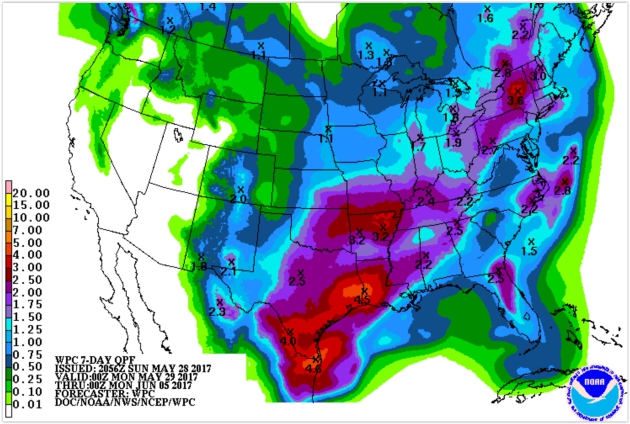
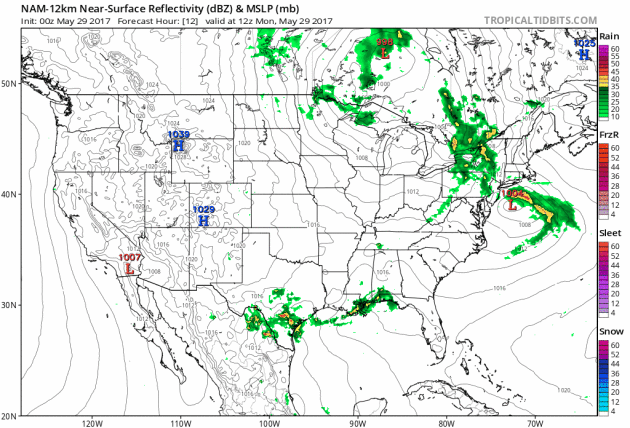
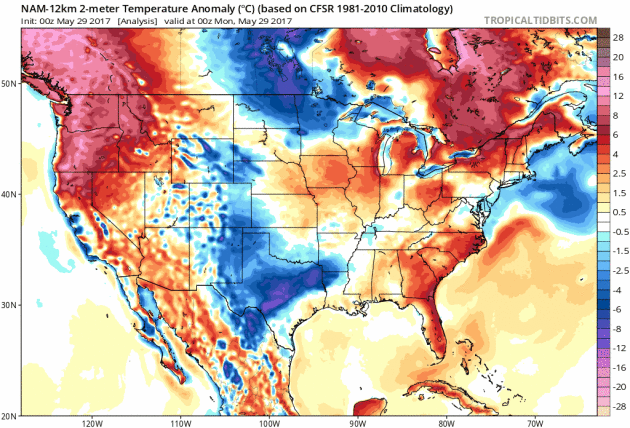
.jpg)
Looming Sunset of Flood Insurance Deal Stirs Angst in Florida, Congress. Because right now U.S. taxpayers are subsidizing federal flood insurance, making it more affordable to live along the coast. Here's an excerpt from The Naples Daily News: "...Congress is considering dramatic changes to the NFIP, which has a $25 billion debt that its director says cannot be repaid. But disagreements remain over how much homeowners should be required to pay for flood insurance to make the program more solvent. The program, run by the Federal Emergency Management Agency, has traditionally charged premiums at about 40 to 45 percent of their full cost, with taxpayers subsidizing the rest. If lawmakers can't reach an agreement, a lapse in FEMA's legal authority to write new policies could disrupt real estate sales in flood-prone areas around the country..."
Miami file photo: Lynne Sladky, AP.
This Is What It's Like To Be Struck by Lightning. 9 out of 10 people struck survive, but many have lifelong ailments. A story at CNN.com caught my eye: "...Lightning is responsible for more than 4,000 deaths worldwide annually, though of every ten people hit, nine survive. But victims can suffer a variety of short- and long-term effects: cardiac arrest, confusion, seizures, deafness, headaches, memory deficits, personality changes and chronic pain, among others. Changes in personality and mood can strain families and marriages, sometimes to breaking point. Cooper likes to use the analogy that lightning rewires the brain in much the same way that an electrical shock can scramble a computer -- the exterior appears unharmed, but the software within that controls its functioning is damaged..."
File image: Jorge Silva, Reuters.
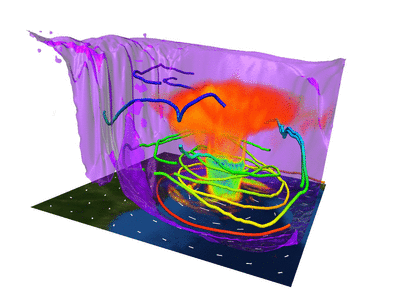
Remembering the Great St. Louis Tornado of 1896. NOAA NCEI takes us back to May 27, 1896: "...In less than half an hour, the tornado carved a three-mile-wide path of destruction across St. Louis. It would most likely be rated as an EF4 today, with winds estimated between 168 and 199 mph. While it was just one of nearly 40 tornadoes to touch down in the central and southern parts of the country between May 15 and May 28, the Great St. Louis Tornado of 1896 still remains the third deadliest tornado in the United States. This single tornado is estimated to have killed at least 255 people and injured another thousand. According to the May 29, 1896, edition of the Chicago Tribune (link is external), “In all probability the exact number of those whose lives were crushed out by falling walls or who met their fate under the waters of the raging Mississippi will never be known...”
Photo credit: NOAA Photo Library. "When it was dedicated in 1874, the Eads Bridge in St. Louis was the first to be constructed of true steel and was touted as being “tornado-proof.” For two decades, the bridge had resisted several storms and floods, bolstering its indestructible reputation. But, on May 27, 1896, a fearsome tornado wreaked havoc across St. Louis that not even the mighty bridge could completely withstand."
Globally,
flooding is the most common disaster risk, accounting for nearly half
of all weather-related disasters during the past 20 years. Exposure and
vulnerability to flood risks are on the rise: the proportion of the
world population living in flood-prone river basins has increased about
114 percent and population exposed to coastal areas has grown 192
percent during the last decade.
"We can't afford to continue to invest in short term solutions that don't take into account how weather patterns, sea levels and land use are changing the nature and severity of flooding," said Anita van Breda, World Wildlife Fund's senior director of environment and disaster. "The traditional approaches we've used to manage flooding in the past – like sea walls and levees – in most cases, won't work in isolation for the types of floods we're likely to experience in the future."
Read more at: https://phys.org/news/2017-05-harnessing-nature.html#jCp
"We can't afford to continue to invest in short term solutions that don't take into account how weather patterns, sea levels and land use are changing the nature and severity of flooding," said Anita van Breda, World Wildlife Fund's senior director of environment and disaster. "The traditional approaches we've used to manage flooding in the past – like sea walls and levees – in most cases, won't work in isolation for the types of floods we're likely to experience in the future."
Read more at: https://phys.org/news/2017-05-harnessing-nature.html#jCp
Globally,
flooding is the most common disaster risk, accounting for nearly half
of all weather-related disasters during the past 20 years. Exposure and
vulnerability to flood risks are on the rise: the proportion of the
world population living in flood-prone river basins has increased about
114 percent and population exposed to coastal areas has grown 192
percent during the last decade.
"We can't afford to continue to invest in short term solutions that don't take into account how weather patterns, sea levels and land use are changing the nature and severity of flooding," said Anita van Breda, World Wildlife Fund's senior director of environment and disaster. "The traditional approaches we've used to manage flooding in the past – like sea walls and levees – in most cases, won't work in isolation for the types of floods we're likely to experience in the future."
Read more at: https://phys.org/news/2017-05-harnessing-nature.html#jCp
"We can't afford to continue to invest in short term solutions that don't take into account how weather patterns, sea levels and land use are changing the nature and severity of flooding," said Anita van Breda, World Wildlife Fund's senior director of environment and disaster. "The traditional approaches we've used to manage flooding in the past – like sea walls and levees – in most cases, won't work in isolation for the types of floods we're likely to experience in the future."
Read more at: https://phys.org/news/2017-05-harnessing-nature.html#jCp
Empire Builder Train-Tornado of May 27, 1931. Agweek takes a look at what happens when an EF-3 tornado encounters a train: "...Around
4:30 that afternoon when The Empire Builder, the transcontinental
passenger train that originated in Seattle and was heading toward
Chicago, was actually struck by a tornado in Clay county. The train had
just left the Fargo station and was near Sabin as severe thunderstorms
were moving through the region. The train first experienced heavy rain
and gusty wind before the tornado (which has been estimated to be an F3
with wind between 136 and 165 mph) struck it broadside and lifted five
of the passenger coaches from the rails..."
Image credit here: "Tornado
meet The Empire Builder May 1931 The Empire Builder, bound from Seattle
to Chicago, was struck by a tornado, May 27, 1931. Only the 136-ton
locomotive remained on the track." Courtesy, Historic NWS Collection, NOAA
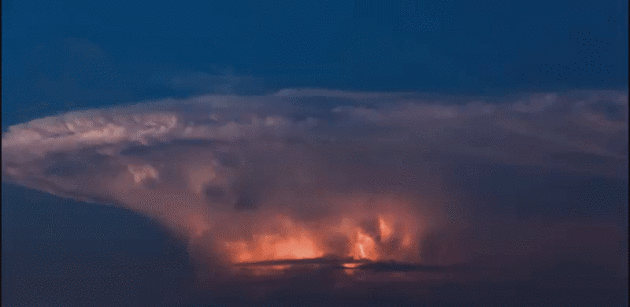
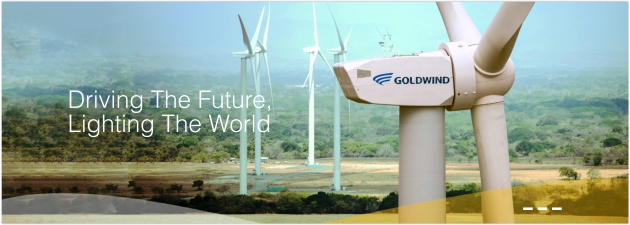
Image credit: ChrisRiddell.com.
Photo credit: "In This May 19, 2017 photo, John Aldridge poses in Montauck, N.Y. with the boots that helped keep him afloat for 12 hours after falling off his lobster boat in the summer of 2013. Nearly 4 years later, he's still working in the profession that put him in so much danger. And he's retelling the remarkable tale in a book released the week of May 29, 2017." AP Photo/Frank Eltman.
Photo credit: "Siesta Beach on Siesta Key, off the coast of Sarasota, Fla., snags the No. 1 spot on Dr. Beach’s annual Top 10." (Chris O'Meara/AP).
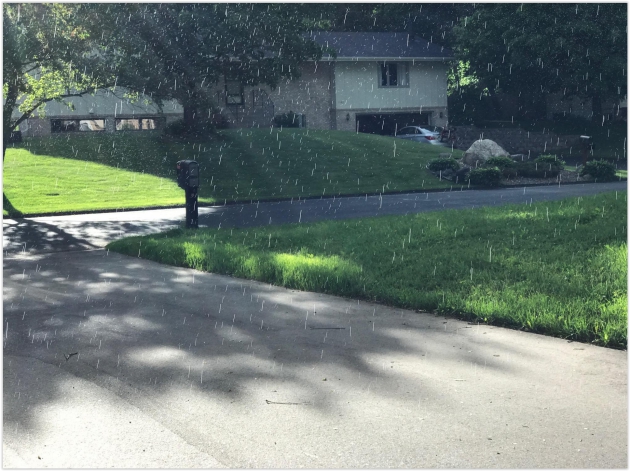
MEMORIAL DAY: Windy, cool and showery. Winds: NW 10-20. High: 61
MONDAY NIGHT: Showers taper. Low: 49
TUESDAY: Scrappy clouds, another shower or sprinkle. Winds: NW 10-15. High: 59
WEDNESDAY: Blue sky, feels like May again. Winds: W 8-13. Wake-up: 47. High: 71
THURSDAY: Partly sunny, more humidity. Winds: S 7-12. Wake-up: 55. High: 78
FRIDAY: Some sun, risk of strong T-storms late. Winds: SE 8-13. Wake-up: 61. High: 81
SATURDAY: Best chance of T-storms AM hours. Winds: NE 10-15. Wake-up: 60. High: 72
SUNDAY: Partly sunny, drier day of weekend. Winds: NE 8-13. Wake-up: 53. High: 73
Climate Stories...
.jpg)
What Happens If The U.S. Withdraws From the Paris Climate Change Agreement. CBS News reports: "...Scientists said it would worsen an already bad problem and make it far more difficult to prevent crossing a dangerous global temperature threshold. Calculations suggest it could result in emissions of up to 3 billion tons of additional carbon dioxide in the air a year. When it adds up year after year, scientists said that is enough to melt ice sheets faster, raise seas higher and trigger more extreme weather. "If we lag, the noose tightens," said Princeton University climate scientist Michael Oppenheimer, co-editor of the peer-reviewed journal Climatic Change..."
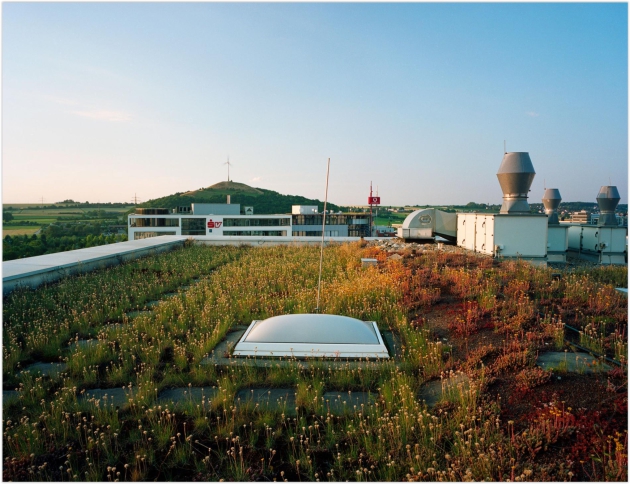
Photo credit: "Buildings with green roofs, like this one in Stuttgart, Germany, don't use as much energy as standard buildings and emit fewer greenhouse gasses." Photo by Diane Cook and Len Jenshel, National Geographic Creative.
Photo credit: "Banner created by Alliance for Climate Education."
What the U.S. Could Learn From the Dutch on Climate Change. We're already taking advantage of their sea walls and levee technology as seas continue to rise and nuisance flooding increases. But there are other lessons, according to MIT Technology Review: "Earlier this month, the Netherlands completed one of the largest offshore wind farms in the world, as an accelerating wind boom finally helps the country make real progress on its renewable energy goals. The 600-megawatt Gemini wind park, operating 150 turbines in the North Sea, will serve some 1.5 million citizens. Several other major offshore wind farms are under development as well, which will collectively push total wind capacity to nearly 4.5 gigawatts by 2023 (see “The Wind Fuels the North Sea’s Next Energy Boom”). “As a country we were heavily dependent on fossil fuels, and our way to renewables has been bumpy,” Sharon Dijksma, the nation’s minister for the environment, told MIT Technology Review this week. “So this government decided that we needed to step up the pace...”
Photo credit: "The Gemini wind farm includes 150 turbines in the North Sea."
So Much Water Pulsed Through a Melting Glacier That It Warped the Earth's Crust. Details via The Washington Post: "NASA scientists detected a pulse of melting ice and water traveling through a major glacier in Greenland that was so big that it warped the solid Earth — a surge equivalent in mass to 18,000 Empire State Buildings. The pulse — which occurred during the 2012 record melt year — traveled nearly 15 miles through the Rink Glacier in western Greenland over four months before reaching the sea, the researchers said. “It’s a gigantic mass,” said Eric Larour, one of the study’s authors and a researcher at NASA’s Jet Propulsion Laboratory. “It is able to bend the bedrock around it.” Such a “wave” has never before been detected in a Greenland or Antarctic glacier..."
Photo credit: "Rink Glacier on Greenland’s west coast." (NASA/John Sonntag).
No comments:
Post a Comment